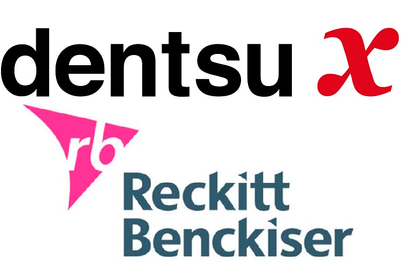
I am not a fan of simply “selling stuff”. That old FMCG trope of selling a single unit with a specific life span to someone, and they return to buy the same thing again. It is time to drag the sector, kicking and screaming, towards a new approach.
Brand owners need to pay more attention to the person’s journey, how it weaves in and out of the physical and digital space, how the two are connected and how their brands can carry over messages, emotions – and most importantly productive, memorable experiences – from one to the other.
From product-first to solution-focused
Discarding the idea of product-first is crucial for brand owners to start thinking in this way. Brands should be developing “solutions” not products. We can no longer assume that the solution is “a liquid in a bottle”.
Take a specific category, such as air care. The opportunity in this sector may lie in a need state that is currently serviced by something else entirely – existing behaviour in that need state may have nothing to do with conventional mass-market branded products. It might be opening the window, buying some flowers or playing some music.
Meeting needs in novel ways
We therefore need to figure out how we can approach someone who has that need, for whom we can provide a solution, but who is not currently open to buying these type of products.
The opportunities lie in building greater understanding. The brand solution to that person’s need may not be another "consumable". It may not be a product, it may not even be a sale. It can be a combination of product and service, or a service only. The value to the brand is in the dissemination and amplification of its values.
Nike does this particularly well. It has several information-based platforms, ranging from Nike Run Club (coaching) to NBA team content via NikeConnect, that blend product and ongoing digital content experiences.
Brands must be more coherent
The biggest challenge for brand owners is figuring out how to keep that solution – and the experience it provides for people – coherent. Forty years ago, most FMCG brands were built on just two touchpoints – the product and packaging to sell from the shelf, and the advertising, which told buyers where to find it and what to look for. Under those circumstances it’s easy to have a consistent look and feel, a consistent way of behaving or tone of voice. With the proliferation of touchpoints, however, you need to work much harder to make that experience coherent.
But, typically, in most FMCG categories, the items that you can buy and the ways in which you experience the brand as a whole tend to be disparate. Often, a brand shows up in one way on the shelf, and in an entirely different way on another touchpoint.
Thinking of human traits
Coherence and associated credibility are easier to achieve if you accept that brands have to behave to some degree like people – to demonstrate personality traits and values that are conveyed through all your behaviour. Without those, it’s too easy to categorise a brand as marketing spin and nothing more.
Oatly is a lovely example of a brand that shows up in a very human way, with a consistent and distinctive tone of voice across all its touchpoints – where it also has a particular attitude and personality. These are traits that we can engage with as people, and choose to associate with, based on our own affinity with certain points of view or behaviours.
Looking to best in class
When it comes to other good examples, service businesses tend to have a good handle on offering this coherence. Some of the challenger banking solutions do it particularly well. They’re almost unrecognisable as a conventional banking offer. Monzo, for example, has a consistent and strong tone of voice, aesthetic and behaviour, which has helped it build loyal and trusting customers, and made it the UK’s most recommended banking brand in 2019, according to YouGov.
The hospitality industry is another sector that offers inspiration. Traditional visual components are a small part of the overall experience in hospitality, and the customer journeys are vastly more complex than what consumable brands have to deal with.
If FMCGs want to move on from their "fire and forget" approach and provide an ongoing experience of sustained engagement with people, they need to be looking at such sectors. They also need people who are trained to think in solution terms. Specialists who have the ability to build deep understanding of people’s needs and ideate without constraint, coupled with the knowledge of how to synthesise potential technical inputs with a solutions mindset – essentially, design thinking.
It is what multinationals such as RB are increasingly aware of and working hard to implement. But it needs to start with basic terminology. Forget about "product", forget about "digital", it is the experience that counts.
Jos Harrison is global head, brand experience and design at RB


.jpg&h=334&w=500&q=100&v=20250320&c=1)


.png&h=334&w=500&q=100&v=20250320&c=1)



.png&h=334&w=500&q=100&v=20250320&c=1)

.png&h=334&w=500&q=100&v=20250320&c=1)






.png&h=268&w=401&q=100&v=20250320&c=1)
